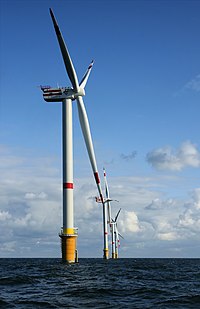
Photo from wikipedia
Abstract Large eddy simulation (LES) is increasingly recognized as an important approach in the assessment of pedestrian level wind (PLW) conditions, while its numerical performance is sensitive to a few… Click to show full abstract
Abstract Large eddy simulation (LES) is increasingly recognized as an important approach in the assessment of pedestrian level wind (PLW) conditions, while its numerical performance is sensitive to a few key parameter settings. This study aims to further identify the sensitivities to these main influencing parameters in modeling wind flow around a building array using LES. This is achieved by quantitatively comparing mean wind velocities from the LES predictions and those from a benchmark wind tunnel experiment. The parameters investigated are the mesh resolution, discretization time step and sampling period, vortices’ number of the inlet flow, the upstream distance of the computational domain, and the sub-grid scale (SGS) models. Results are quantified using four validation indices. Specifically, the correlation coefficient R between the predicted results using SGS model with the dynamic Smagorinsky-Lilly method and the experimental results is 0.89, which is higher than those between the experiment results and other three SGS models. Based on the sensitivity tests, it is recommended that the normalized discretization time step be set below 0.09, and that the normalized sampling period and vortices’ number be above 219 and 190, respectively, in the LES simulation of PLW flows around a building array.
Journal Title: Sustainable Cities and Society
Year Published: 2019
Link to full text (if available)
Share on Social Media: Sign Up to like & get
recommendations!